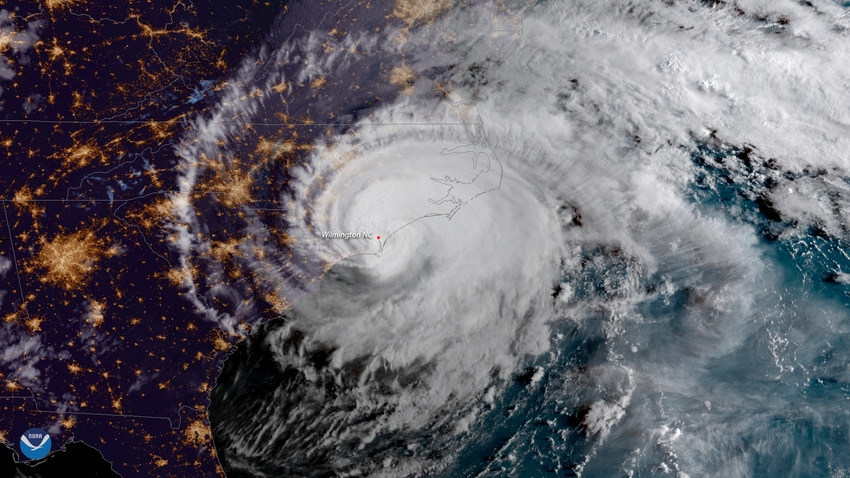States reporting cotton, tobacco crop damage, livestock barn flooding.

Flooding is expected to continue as both North Carolina and South Carolina are reporting some initial impacts to the agriculture industry due to Hurricane Florence.
“This is an epic storm that is still continuing because the rivers are rising in certain parts of our states,” said North Carolina Gov. Roy Cooper said Monday during a briefing. “Some areas have not seen the worst flooding yet.”
North Carolina Pork Council (NCPC) reported Sept. 16 that hog farmers in North Carolina are watching with great concern the still-rising flood waters and that on-farm assessments and industry aerial surveys conducted have determined that flood waters have reached portions of farms in at least three locations. However, animals were moved from the affected locations prior in advance of the storm or are continuing to receive attention from farmers, it said.
“In many locations, trucks have been able to continue to move animals in response to the flooding,” NCPC noted.
Efforts continue in affected areas to provide feed and care for animals, and fuel to power farms, while ensuring safety for our farm families and farm employees.
Given that record-shattering flooding is forecast to persist for days, NCPC expects additional farms will be affected.
“We do not anticipate severe impacts to the vast majority of the more than 2,100 permitted farms in the state.”
Michael Regan, secretary of the North Carolina Department of Environmental Quality, said Sept. 17 during a briefing that one hog lagoon breach had been reported in Duplin County, five overtops had been reported in Jones and Pender Country, and two hog lagoons had been reported as being inundated by nearby bodies of water in Jones County.
Joe Sanderson, Jr., chairman and chief executive officer of Sanderson Farms Inc., provided an update over the weekend on the status of its facilities in North Carolina.
“We are pleased to report we have not received any news of injury or loss of life among our employees and growers in the North Carolina area affected by this devastating storm,” he said. “We will continue to assess the situation related to our processing plant, hatchery and feed mill in Kinston, North Carolina, and our processing plant and hatchery located in St. Pauls and Lumberton, North Carolina.”
An initial assessment indicated no significant damage to those facilities and power was restored in Kinston, he reported. However, given the amount of rain those areas continue to receive, the company will continue to assess operations.
“Our live inventory and the assets of our independent poultry producers in the region comprise a significant portion of our operations. Given the logistical difficulties caused by flooding and impassable roads, assessments of damage to those facilities will also continue,” Sanderson said.
South Carolina crops take a hit
In South Carolina, the state’s commissioner of agriculture Hugh Weathers plans to survey crop damage throughout his state on Tuesday, September 18, but confirmed that damage was already being reported. The tour is expected to concentrate on Dillon, Florence, Georgetown, Horry and Williamsburg counties, where cotton and soybean crops – abundant in those areas – were most at risk for wind damage from the storm.
“Timing is everything with a storm like Florence, and the timing was particularly bad for our cotton farmers, who are telling us their crops took a hit from the high winds,” said Weathers. “Because soybeans are a month or two from harvest, they may incur less damage. We’ll know more when official assessments take place this week.”
The South Carolina Department of Agriculture continues to communicate with farmers throughout the state to obtain first-person accounts of Florence’s impact. Flooding, power outages, and other storm-related consequences may continue to affect not only cotton and soybean crops, but also specialty crops and industrial hemp.
“South Carolina farmers are resilient, and unfortunately they’ve had a lot of experience with devastating weather over the last several years,” said Weathers. “Our prayers are with these hardworking men and women, and the Department of Agriculture will do everything possible to assist them in the aftermath of Florence.”
About the Author(s)
You May Also Like

.png?width=300&auto=webp&quality=80&disable=upscale)

